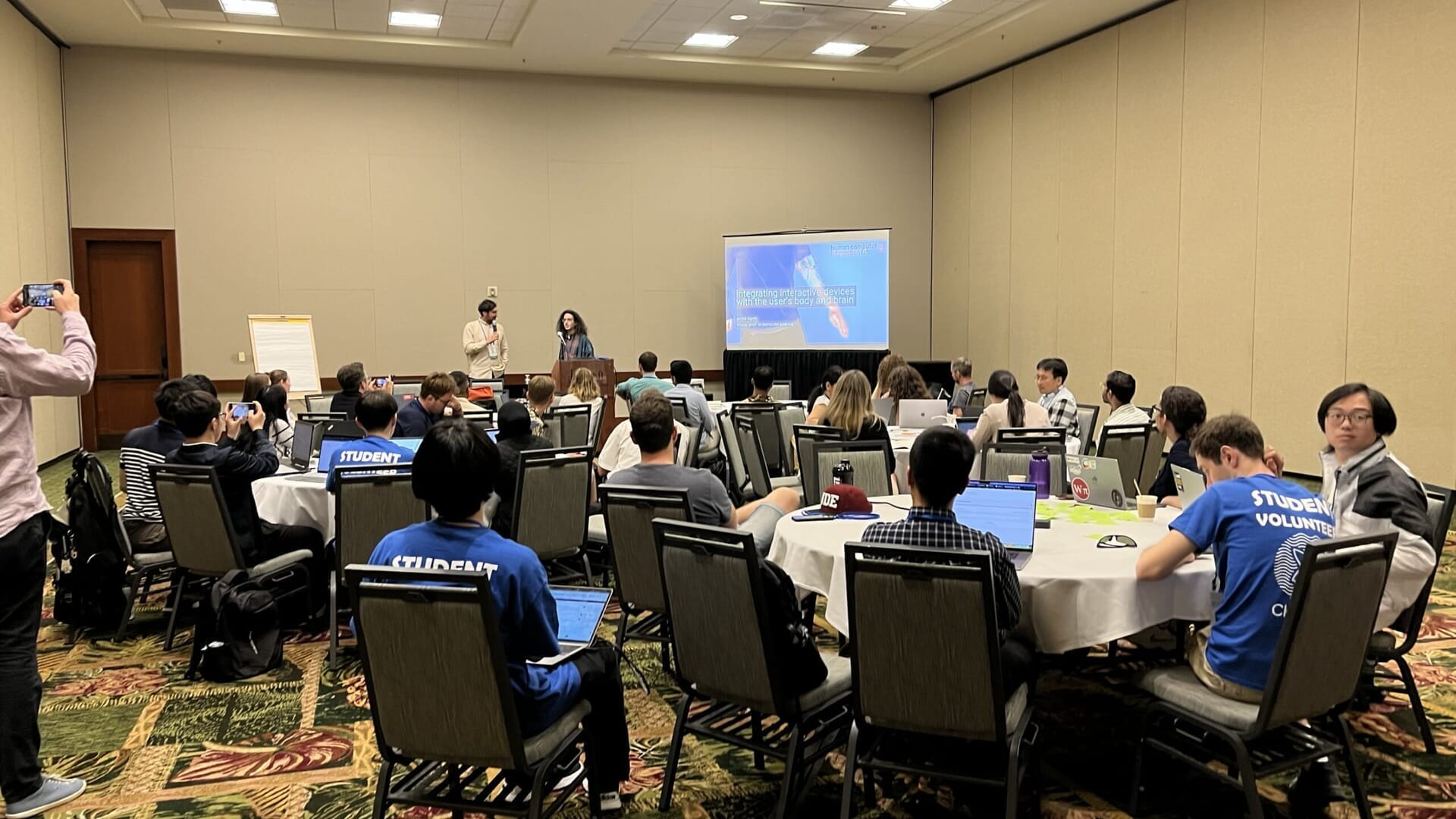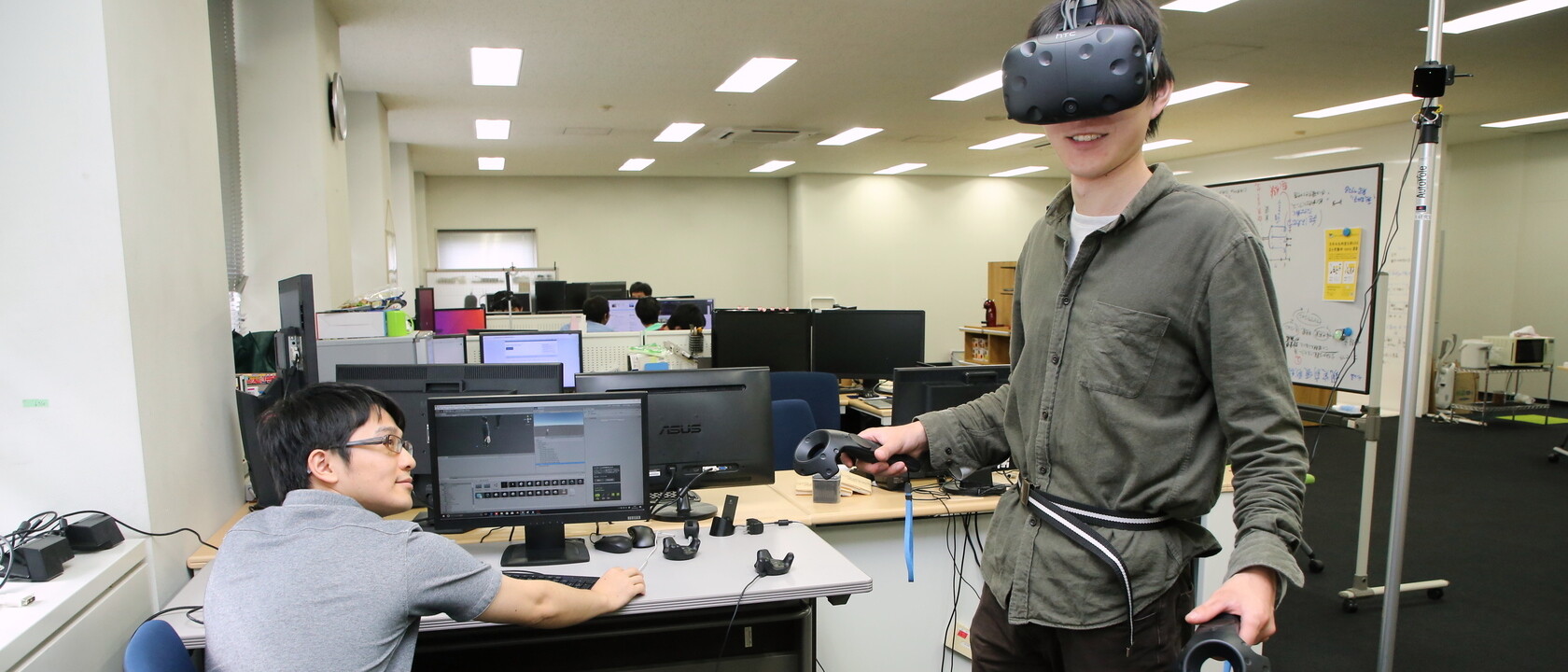ヒューマンコンピュータインタラクション分野のトップカンファレンスである the ACM CHI Conference on Human Factors in Computing Systems 2024 が2024年5月11日から16日にかけて米国ハワイで開催され、ペルスキア助教のフルペーパー1件およびLate-Breaking Work 2件が発表されました。”ShareYourReality: Investigating Haptic Feedback and Agency in Virtual Avatar Co-embodiment” と題した論文は、the Runner-Up honor in the category of Research Teams with Inspirational Research Practices を受賞しました。ペルスキア助教はさらに、”PhysioCHI: Towards Best Practices for Integrating Physiological Signals in HCI” と題したワークショップを開催しました。
(Paper)
- Karthikeya Puttur Venkatraj, Wo Meijer, Monica Perusquia-Hernandez, Gijs Huisman, Abdallah El Ali, “ShareYourReality: Investigating Haptic Feedback and Agency in Virtual Avatar Co-embodiment“
(Abstract) Virtual co-embodiment enables two users to share a single avatar in Virtual Reality (VR). During such experiences, the illusion of shared motion control can break during joint-action activities, highlighting the need for position-aware feedback mechanisms. Drawing on the perceptual crossing paradigm, we explore how haptics can enable non-verbal coordination between co-embodied participants. In a within-subjects study (20 participant pairs), we examined the effects of vibrotactile haptic feedback (None, Present) and avatar control distribution (25-75%, 50-50%, 75-25%) across two VR reaching tasks (Targeted, Free-choice) on participants’ Sense of Agency (SoA), co-presence, body ownership, and motion synchrony. We found (a) lower SoA in the free-choice with haptics than without, (b) higher SoA during the shared targeted task, (c) co-presence and body ownership were significantly higher in the free-choice task, (d) players’ hand motions synchronized more in the targeted task. We provide cautionary considerations when including haptic feedback mechanisms for avatar co-embodiment experiences.
(CHI Program) https://programs.sigchi.org/chi/2024/program/content/147264
(YouTube) https://www.youtube.com/watch?v=ebMrJWsy_TU

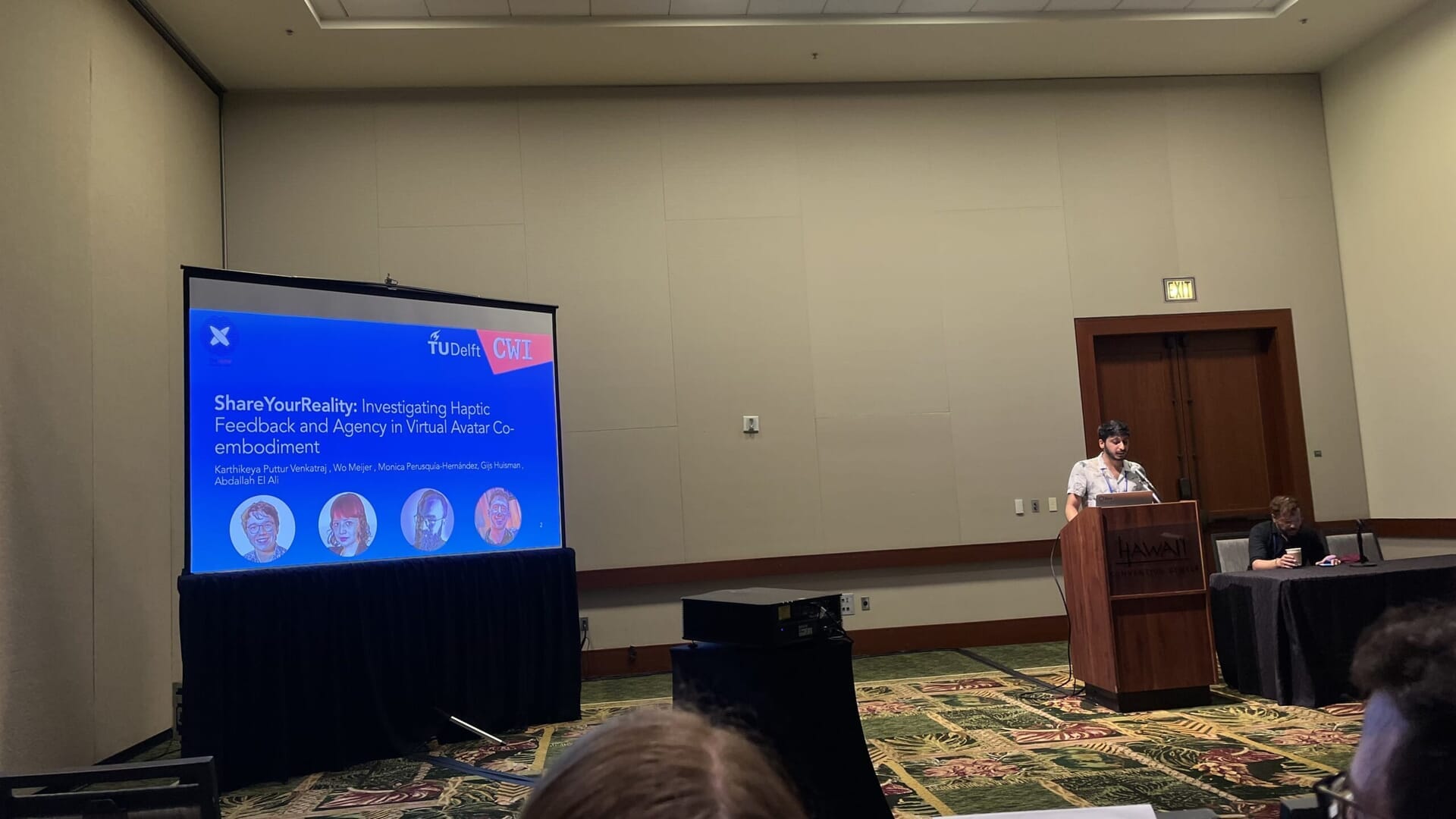
(Late Breaking Work)
- Michael Thomas Knierim, Lukas Braun, Monica Perusquia-Hernandez, “Warmth on Demand: Designing Headphones for Enhanced Thermal Comfort in Work Environments“
(Abstract) In response to the increasing demand for personalized body temperature management, our study investigates headphones as a wearable system for enhancing thermal comfort in work environments. Utilizing a mixed-methods approach, we evaluated user experiences with our developed thermoactive prototype. The results demonstrate that active heating via headphones provides more pronounced thermal effects compared to passive heating with regular headphones, particularly around the ears, but also moderately for the whole body, offering potential relief in cold office settings. However, the qualitative insights suggest that its effectiveness in supporting whole-body thermal comfort diminishes in the presence of intense cold in extremities like hands or feet. Additionally, our findings indicate a modest link between thermal comfort and productivity-related factors, including performance, workload, and frustration during work. These insights show the potential of integrating thermal comfort solutions in everyday wearable technology like headphones, leveraging their ubiquity to enhance user well-being and work efficiency.
(CHI Program) https://programs.sigchi.org/chi/2024/program/content/150795
(YouTube) https://www.youtube.com/watch?v=YwVTCPCOtZY
(Poster Material) https://www.dropbox.com/scl/fi/08yasirieajbguix238hg/chi24k-sub1257-cam-i46.pdf?rlkey=rdl9c9f3r8lyhsr1ics7prj9a&e=1&dl=0
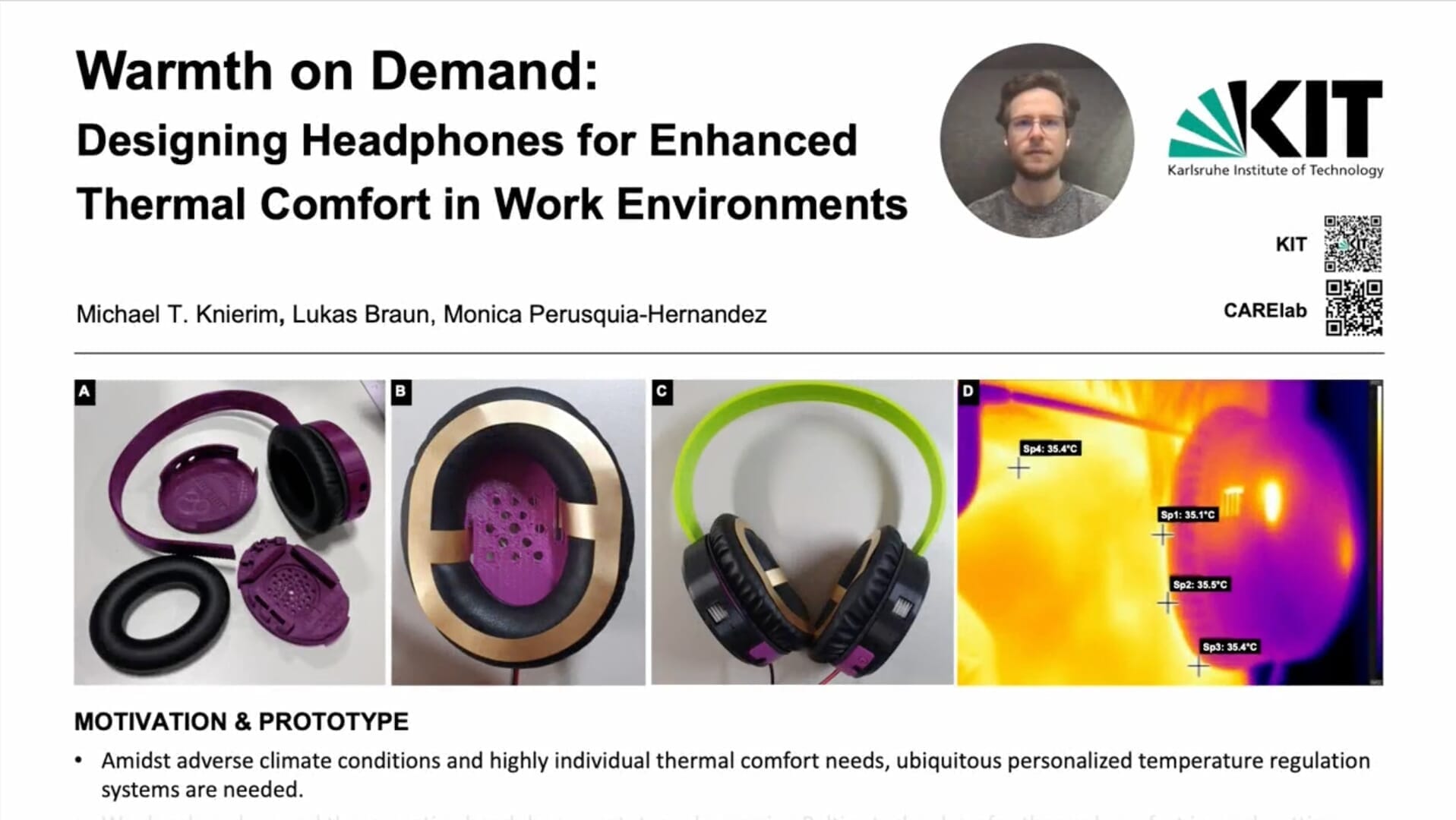
- Maryam Bandukda , Yichen Wang , Monica Perusquia-Hernandez , Franklin Mingzhe Li , Catherine Holloway, “Context matters: Investigating information sharing in mixed-visual ability social interactions“
(Abstract) Social inclusion of disabled people has been a topic of interest in HCI research led by the rise of ubiquitous and camera-based technologies. As the research area is increasing, a comprehensive understanding of blind, partially sighted (BPS), and sighted people’s needs in various social settings is needed to fully inform the design of social technologies. To address this, we conducted semi-structured individual and group interviews with 12 BPS and eight sighted participants. Our findings show that context-dependent information-sharing needs of BPS and sighted people vary across social contexts (illustrated in Figure 1). While currently depending on support from sighted companions, BPS participants expressed a strong sense of independence and agency. We discuss the tensions between BPS people’s information needs, sighted people’s privacy concerns, and implications for the design of social technologies to support the social inclusion of BPS people.
(CHI Program) https://programs.sigchi.org/chi/2024/program/content/150509
(YouTube) https://www.youtube.com/watch?v=6_epYeH0AUc
(Poster Material) https://www.dropbox.com/scl/fi/wwikt0b4c4mx6zw5nnwpp/chi24k-sub2804-cam-i46.pdf?rlkey=nadvhbm4jxj6k4pxhu4lnil5r&e=1&dl=0
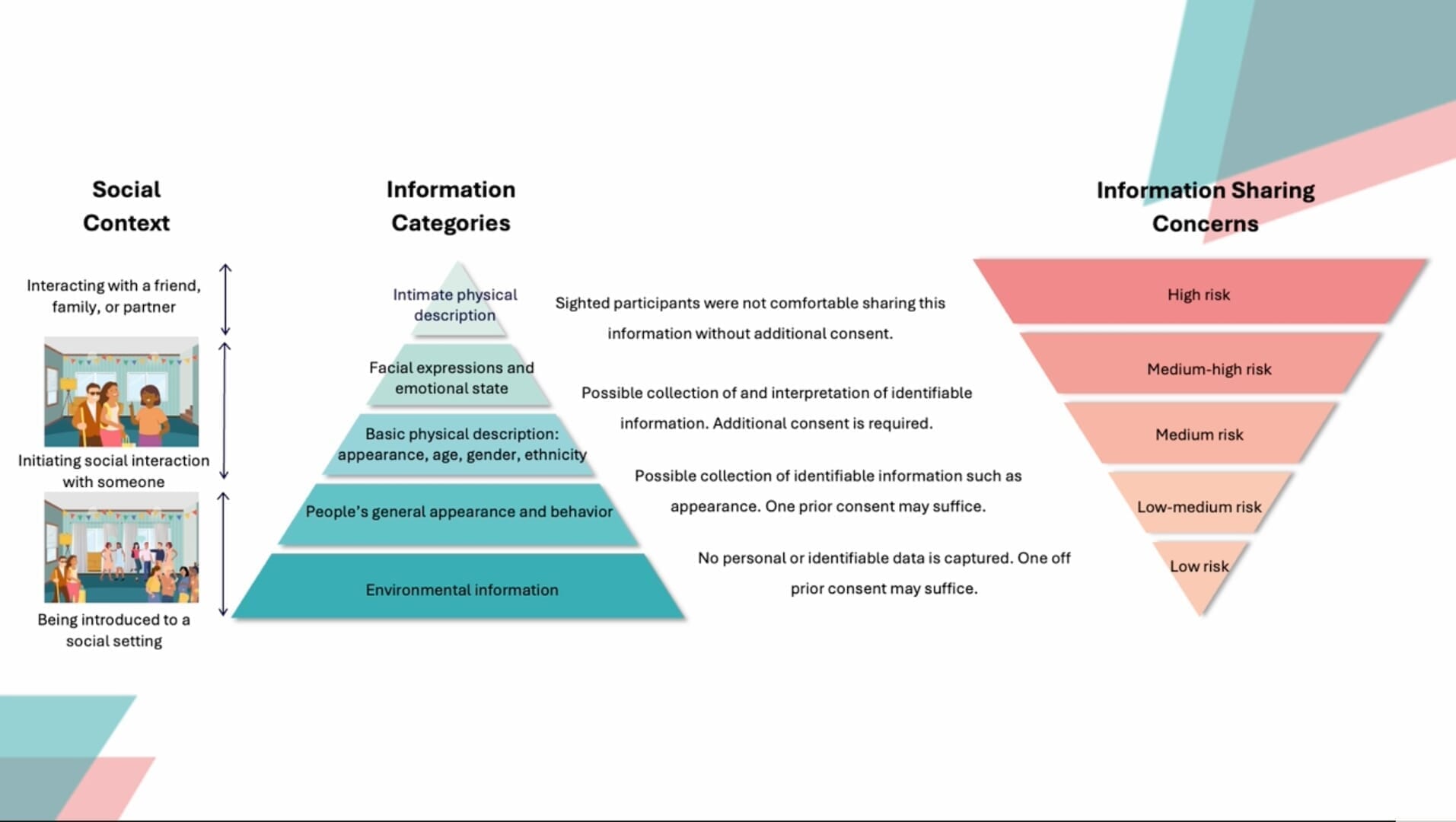
(Workshop)
- Francesco Chiossi, Ekaterina R. Stepanova, Benjamin Tag, Monica Perusquia-Hernandez, Alexandra Kitson, Arindam Dey, Sven Mayer, Abdallah El Ali, “PhysioCHI: Towards Best Practices for Integrating Physiological Signals in HCI“
(Abstract) Recently, we saw a trend toward using physiological signals in interactive systems. These signals, offering deep insights into users’ internal states and health, herald a new era for HCI. However, as this is an interdisciplinary approach, many challenges arise for HCI researchers, such as merging diverse disciplines, from understanding physiological functions to design expertise. Also, isolated research endeavors limit the scope and reach of findings. This workshop aims to bridge these gaps, fostering cross-disciplinary discussions on usability, open science, and ethics tied to physiological data in HCI. In this workshop, we will discuss best practices for embedding physiological signals in interactive systems. Through collective efforts, we seek to craft a guiding document for best practices in physiological HCI research, ensuring that it remains grounded in shared principles and methodologies as the field advances.
(CHI Program) https://programs.sigchi.org/chi/2024/program/content/151098
